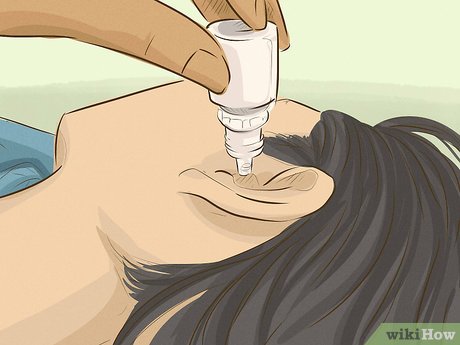Fluid in the middle ear is also known as serous otitis media. This condition happens for many reasons but most commonly comes from a middle ear infection. Other reasons could be allergies, sinus infections, viral infections, and even acid reflux.
As the pain and inflammation from the ear infection get better, the fluid doesn’t always leave the middle ear.
This article discusses how to drain fluid from the middle ear.
1. What is middle ear fluid and what are its symptoms of it?
Middle ear fluid is a clear, watery liquid that can build up in the middle ear space. It is often caused by an infection, such as a cold or sinus infection, but it can also be caused by allergies, viral infections, and even acid reflux.
Symptoms of middle ear fluid include:
• Ear pain
• A feeling of fullness or pressure in the ear
• Tinnitus (ringing in the ears)
• diminished hearing
2. How to drain fluid from the middle ear using a syringe
If you have fluid in your middle ear, you may need to have it drained in order to relieve the pressure and pain. This can be done at home using a syringe.
First, clean the syringe with rubbing alcohol and let it air dry. Then, fill the syringe with warm water. Next, tilt your head to the affected ear and pull your earlobe backward and upward. Finally, insert the syringe tip into your ear canal and release the water slowly. Repeat this process two to three times per day until the fluid is gone.
3. Tips for keeping your ears healthy and preventing fluid build-up
Here are some Tips for your ears to keep healthy and prevent fluid build-up
• Avoid putting objects in your ear canals, such as Q-tips or fingers.
• Practice good hygiene by washing your hands often and avoiding touching your face.
• Keep your ears clean by using a soft cloth to wipe them out after showers.
• Avoid exposure to loud noise.
• Quit smoking and avoid secondhand smoke.
• Get treated for allergies and sinus infections.
• Manage your acid reflux.
If you have fluid in your middle ear or are prone to ear infections, following these tips can help prevent further build-up. However, if you have any concerns, be sure to consult with your doctor.
4. When to see a doctor about drainage from the middle ear
If you have persistent fluid in your middle ear or if home treatment is not working, it’s important to see a doctor. They can prescribe medication to help clear the fluid and may also place a tube in your ear to keep the middle ear ventilated and prevent future infection. In some cases, surgery may be necessary to remove the blockage.
Drainage from the middle ear is a common occurrence, but if it’s accompanied by severe pain, hearing loss, or fever, it’s important to see a doctor right away as it could be a sign of a more serious condition.
Conclusion:
Fluid in the middle ear is a common condition that can be caused by a variety of things, such as infection, allergies, and acid reflux. If you have fluid in your middle ear, you may need to have it drained in order to relieve the pressure and pain. This can be done at home using a syringe. However, if home treatment is not working or if you have any concerns, be sure to consult with your doctor.
FAQs
1. What is middle ear fluid?
Middle ear fluid is a clear, watery liquid that can build up in the middle ear space.
2. What causes middle ear fluid?
Middle ear fluid is often caused by an infection, such as a cold or sinus infection, but it can also be caused by allergies, viral infections, and even acid reflux.
3. How do I get rid of middle ear fluid?
If you have fluid in your middle ear, you may need to have it drained in order to relieve the pressure and pain. This can be done at home using a syringe. First, clean the syringe with rubbing alcohol and let it air dry.
Khalid Irfan is a Fitness expert who enjoys spending time in gym. He also enjoys being in the outdoors and exploring new opportunities whenever they arise as well as researching new topics to expand his horizons.

